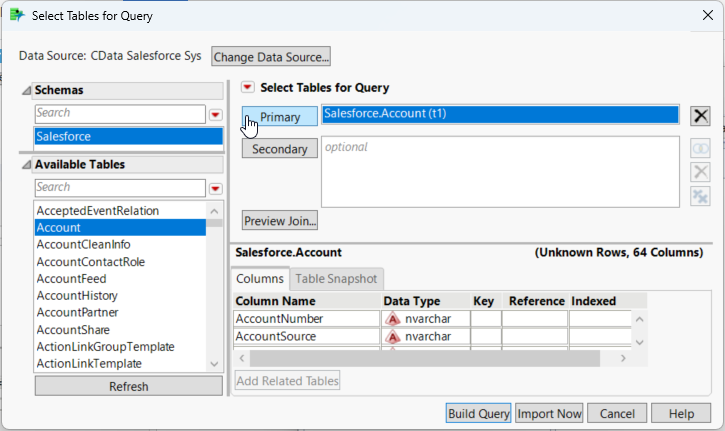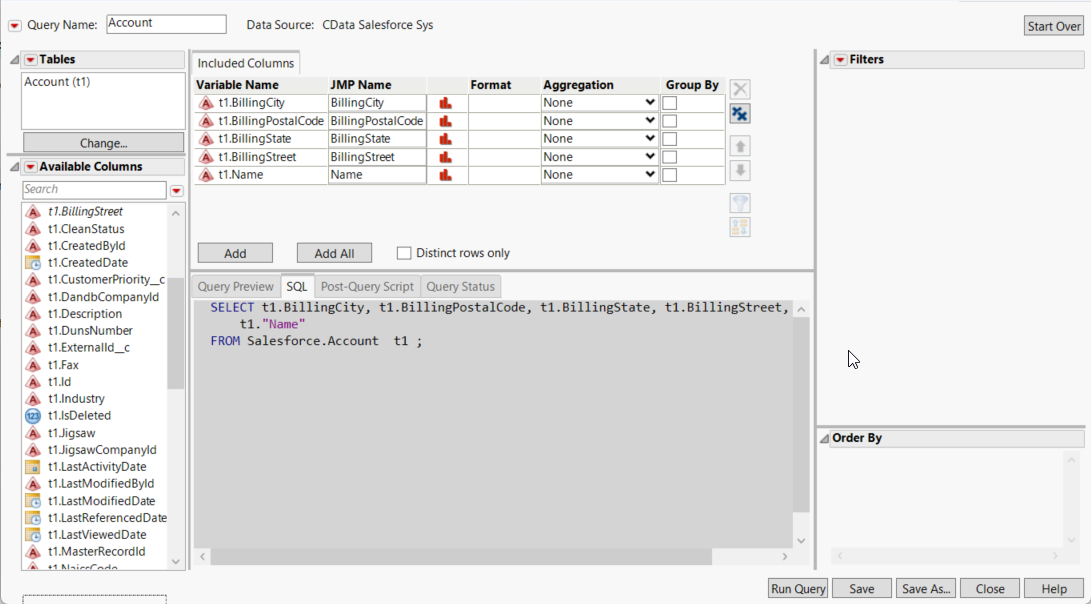Discover how a bimodal integration strategy can address the major data management challenges facing your organization today.
Get the Report →Use the CData ODBC Driver for QuickBooks POS in SAS JMP
You can use the CData ODBC Driver to integrate QuickBooks POS data into the statistical analysis tools available in SAS JMP. This article shows how to use QuickBooks POS data in the Graph Builder and Query Builder.
You can use the CData ODBC Driver for QuickBooks POS to integrate live data into your statistical analysis with SAS JMP. The driver proxies your queries directly to the QuickBooks POS API, ensuring that your analysis reflects any changes to the data. The CData ODBC Driver supports the standard SQL used by JMP in the background as you design reports.
The QuickBooks POS API supports bidirectional access. This article shows how to access QuickBooks POS data into a report and create data visualization. It also shows how to use SQL to query and manipulate QuickBooks POS data from the JMP Query Builder.
Access QuickBooks POS Data as an ODBC Data Source
If you have not already, first specify connection properties in an ODBC DSN (data source name). This is the last step of the driver installation. You can use the Microsoft ODBC Data Source Administrator to create and configure ODBC DSNs.
When you are connecting to a local QuickBooks instance, you do not need to set any connection properties.
Requests are made to QuickBooks POS through the Remote Connector. The Remote Connector runs on the same machine as QuickBooks POS and accepts connections through a lightweight, embedded Web server. The server supports SSL/TLS, enabling users to connect securely from remote machines.
The first time you connect, you will need to authorize the Remote Connector with QuickBooks POS. See the "Getting Started" chapter of the help documentation for a guide.
When you configure the DSN, you may also want to set the Max Rows connection property. This will limit the number of rows returned, which is especially helpful for improving performance when designing reports and visualizations.
Import QuickBooks POS Data with the Query Builder
After you have created the QuickBooks POS DSN, you can use SQL to invoke the capabilities of the QuickBooks POS API. Follow the steps below to execute some supported queries in the Query Builder:
- In SAS JMP, click File -> Database -> Query Builder. The Select Database Connection dialog is displayed.
- Click New Connection.
- On the Machine Data Source tab, select the DSN. In the next step, the Select Tables for Query dialog is displayed.
- In the Available Tables section, select a table and click Primary.
- As you drag Available Columns to the Included Columns tab, the underlying SQL query is updated.
![The generated query in the Query Builder. (Salesforce is shown.)]()
- Click Run Query to display the data.
![The results of a query in the Query Builder. (Salesforce is shown.)]()
- To refresh the results with the current data, right-click Update from Database and click Run Script.
Manipulate QuickBooks POS Data
You can execute data manipulation queries from JSL scripts such as the one below. To execute a script, click New Script in the toolbar. To connect, specify the DSN. You can then use the standard SQL syntax:
Open Database( "DSN=CData QuickBooksPOS Source;",
"INSERT INTO Customers
(LastName)
VALUES ('Cook');");
Visualize QuickBooks POS Data
After importing, you can use the Graph Builder to create graphs visually. To open the Graph Builder, click the Graph Builder button in the toolbar.
- Drag a dimension column onto the x axis. For example, ListId.
- Drag a measure column onto the y axis. For example, AccountLimit.
- Select a chart type. For example, a bar chart.
![Configuration of a basic chart. (Salesforce is shown.)]()









